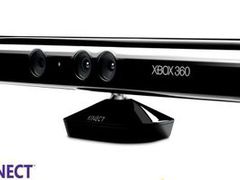Video Gamer is reader-supported. When you buy through links on our site, we may earn an affiliate commission. Prices subject to change. Learn more
This year Sony and Microsoft each launched motion control platforms, the PS Move and Kinect for Xbox 360, respectively. There’s been plenty of debate about which tech is better and understandably Sony reckons its product is the one to go for, but why? We caught up with Sony Computer Entertainment software engineer Anton Mikhailov to find out.
“We’re not necessarily against Kinect or against depth cameras, it’s just we feel like Move has more applicability across more genres so it fits better with what we try to do.
“Also I think the tech is a bit, not so much immature, but not quite up to spec in what we think. Like the PlayStation Eye camera runs at 60 frames per second so it can track you very quickly whereas the Kinect and other depth camera are only 30 frames per second. So they are more suited for slower motions. Dancing is still kind of okay and then the yoga stuff that they were doing, it fits that very well, whereas if you want to do quick punches it’s harder to do that just because you can’t see the player as quickly. And there’s also more latency, things like that. So you know, it’s not a particularly sexy result, it’s just mostly technological problems.”
Asked to go into more detail about the problems with Kinect, Mikhailov added:
“We thought that they were just minor, well not so much minor. Marketing-wise they’re minor tech problems, technologically-wise they’re quite big,” he explained. “The fact that it runs at 30 frames per second instead of 60, that’s a common problem with all those cameras. It’s actually hard to fix because you have a lot of data to transport. Sort of working with that image is expensive computationally-wise. I think they quoted something like 10-15 per cent of the Xbox resources, plus like 50 megs of memory or something like that. The Move takes less than 1%, and like 1 megabyte. So, you know, that’s just a bunch of numbers but to developers that means like Killzone 3 can just put in Move and not have to worry about it, whereas something like Kinect you have to make significant game changes to actually fit that into your game. So that’s a big plus for Move I think ’cause a lot of people can just try it out and put it in.
“Another issue is resolution; it’s a 320×240 camera as far as I’ve heard and the out-to is 640×480 so neither of those are particularly hot resolutions but you can take what you can get. I mean, a lot of webcams now are 720p, etc. but the reality is those cameras are much more expensive and they’re running again at lower frame-rates. So when you do a bunch of this maths, like, the resolution I think is too low, I think the frame-rate is too low, and I think some materials are still a problem. So like, some jeans are a problem. You get these things called infra-red black objects, so for example you’re wearing a black shirt so the camera when it looks at you it sees black because no light is being reflected back at it. So infra-red is just another band of light and there are objects that are black in the infra-red spectrum. They’re not the same objects that are black right now but for example, like, leather tends to have I think – it’s newer or older leather – one of those in infra-red black and some denim jeans are infra-red black. I think those really shiny ones? And some are reflective so either you get things that are just missing from the image or you get things that are shining brightly and are hard to understand.
“So an easy way to test it is if you look at any of those hacked Kinect videos which show the raw output, and if you pay attention closely – if you see a glass table – that’ll usually be missing or there will be things that are kind of missing and you have to work around that. So that’s the issues that they have. We felt that those are a different set of issues, they’re not necessarily better or worse. That would be nice if those went away.”
Mikhailov also explained that despite some technical shortcomings in the PlayStation Eye camera, much of what Kinect can achieve remains possible for the PS3.
“Kinect can sense the distance to an object whereas the [PlayStation] Eye has to do that through – Kinect kind of gets that for free, that’s part of its output, whereas with the Eye we have to do vision algorithms to get that,” he explained. “So something like Kung Fu Live, so that does background subtraction, so Kinect again gets that for free whereas with the Eye we have to do some algorithms. It’s always more robust when you get it in the hardware but the reality is we can still do a lot of these features with just the Eye and if the users are happy with both then we’re equivalent in that sense.”
For more from Mikhailov, head over to the interview in full.
